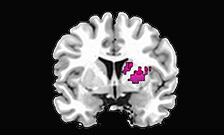Positive effect of stimulant medication for ADHD
The abnormal brain structure of Attention Deficit Hyperactivity Disorder (ADHD) patients may be repaired by long-term stimulant medication, according to a new meta-analysis of structural imaging studies. The research, from the Institute of Psychiatry (IoP) at King’s College London, was published in the American Journal of Psychiatry.
The review looked at 14 structural neuro-imaging studies of 378 ADHD patients and 344 healthy individuals and found that ADHD patients have a lower volume of gray matter in a particular area of the brain, the basal ganglia, compared to healthy individuals. The basal ganglia are responsible for modulating behaviour, motor activity, self-control and attention, all of which are typically affected in ADHD.
The research, led by Dr David Mataix-Cols and Professor Katya Rubia at the IoP at King’s, also found that patients who had received long-term stimulant medication to treat ADHD did not show this abnormal brain structure, but had similar brains to healthy individuals.
Stimulant medication is the most common treatment for ADHD and is effective in about 70% of cases. However, patients, parents and professionals have previously expressed concern about the potential long-term effects of prescribing stimulant medication to young people whose brains are still developing.
Prof Rubia says: ‘What we’re beginning to see from these findings is that stimulant medication, commonly believed to have negative effects on long-term brain development, may in fact promote repair in the regions of the brain damaged by ADHD. These are very exciting findings, and merit further research in order to confirm the exact effects of these drugs.’
The research also found that the volume of the basal ganglia returned to normal with age whether or not the patient was taking medication, suggesting that children with ADHD may grow out of structural abnormalities in the basal ganglia.
For full paper: Nakao et al., (2011), 'Gray matter volume abnormalities in ADHD: vocel-based meta-analysis exploring the effects of age and stimulant medication', American Journal of Psychiatry doi:10.1176/appi.ajp.2011.11020281

Image: The purple area is the region where ADHD patients show abnormal grey matter, i.e. the basal ganglia.
For more information, please contact Despina Koniordou, Institute of Psychiatry at King’s College London, email: iop-pr@kcl.ac.uk or tel: 0207 848 5377